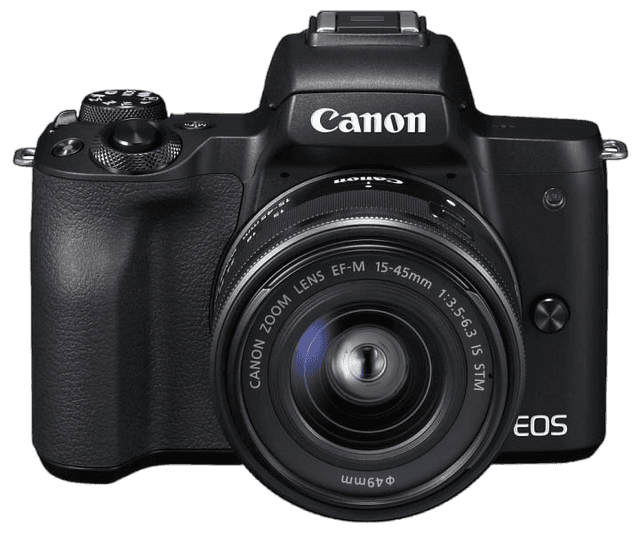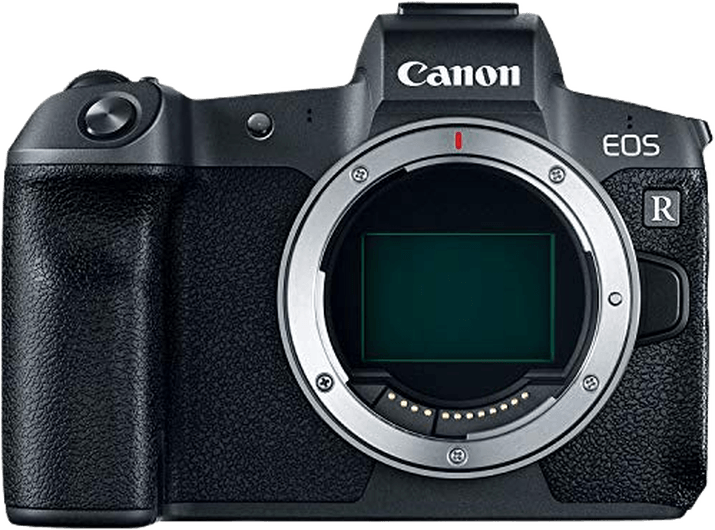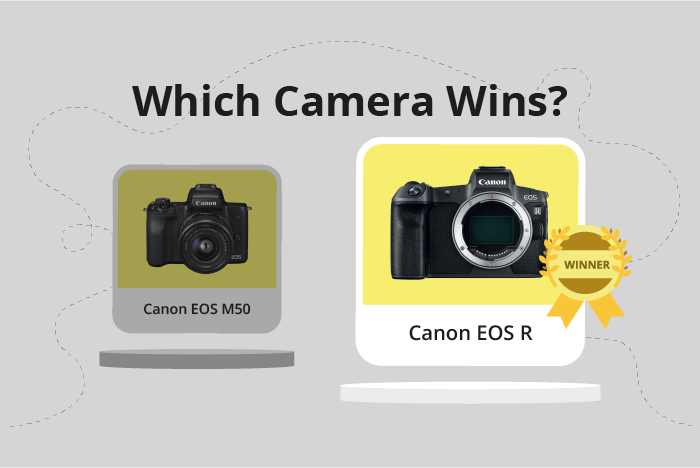Canon EOS M50 vs EOS R Comparison
Canon EOS M50

Canon EOS R

The Canon EOS R outperforms the Canon EOS M50 with a score of 74/100 compared to the M50’s 59/100. Both cameras are mirrorless, announced and released in 2018. They share similarities in their design, but there are key differences that set them apart.
The EOS R excels with its higher score, which is a reflection of its superior specifications. It boasts a larger size of 136 x 98 x 84mm and a heavier weight of 485g. The increased dimensions and weight contribute to the camera’s robust build and better handling.
On the other hand, the EOS M50 has a more compact size of 116 x 88 x 59mm and weighs only 390g, making it easier to carry around. Its launch price was also significantly lower at $779 compared to the EOS R’s $2300.
Taking these factors into account, the Canon EOS R is a better choice for professionals seeking advanced features and top-notch performance, while the Canon EOS M50 is suitable for casual photographers who prioritize portability and affordability.
Canon EOS M50 vs EOS R Overview and Optics
The Canon EOS R outperforms the Canon EOS M50 in optics with a score of 73/100 compared to the M50’s 59/100. Both cameras share several specifications, including a CMOS sensor type, Digic 8 processor, and a lack of image stabilization. Despite these similarities, the differences in their optics are significant.
The EOS R boasts a higher megapixel count of 30.3, compared to the M50’s 24 megapixels. This increased resolution allows the EOS R to capture more detail in images, resulting in higher quality photos. Additionally, the EOS R has a full-frame sensor size, which provides better low-light performance and a shallower depth of field compared to the M50’s APS-C sensor. The EOS R’s sensor also has a higher DXOMARK score of 89, reflecting its superior image quality.
The EOS R is equipped with the Canon RF lens mount, which offers a wide range of high-quality lenses compatible with the camera. On the other hand, the M50 has the Canon EF-M lens mount, which has fewer lens options compared to the RF mount.
However, the M50 does excel in one area: shooting speed. With a speed of 10 frames per second, the M50 is faster than the EOS R’s 8 frames per second. This makes the M50 a better option for capturing fast-moving subjects or action scenes.
Taking these factors into consideration, the Canon EOS R is the superior camera in terms of optics due to its higher megapixel count, full-frame sensor, and better lens compatibility. While the Canon EOS M50 has a faster shooting speed, its overall optics performance is not as strong as the EOS R. The choice between these cameras ultimately depends on the photographer’s priorities and intended usage.
Canon EOS M50 vs EOS R Video Performance
The Canon EOS M50 outperforms the Canon EOS R in video capabilities, scoring 91/100 compared to the EOS R’s 70/100. Both cameras share some common specifications, including a maximum video resolution of 4K and dimensions of 3840 x 2160. Additionally, both cameras have built-in time-lapse functionality.
The EOS M50 surpasses the EOS R with a higher maximum video frame rate of 120fps, allowing for smoother slow-motion footage and greater creative versatility. This higher frame rate is a significant advantage for those who prioritize capturing fast-paced action or creating more dynamic video content.
On the other hand, the EOS R does not offer any specific advantages over the EOS M50 in terms of video capabilities. Its maximum video frame rate is only 30fps, limiting its potential for capturing fast action or creating smooth slow-motion footage. This lower frame rate might be sufficient for basic video needs, but it does not match the capabilities of the EOS M50.
Considering the video capabilities of both cameras, the Canon EOS M50 is the clear winner due to its higher maximum video frame rate. This feature allows for greater creative control and the ability to capture smoother, more dynamic footage. While the EOS R shares some common specifications with the EOS M50, its lower frame rate makes it less suitable for those who prioritize video performance.
Canon EOS M50 vs EOS R Features and Benefits
The Canon EOS R outperforms the Canon EOS M50 with a feature score of 87/100, compared to the M50’s 70/100. Both cameras share several common specifications, including touchscreen capabilities, flip screens, and the absence of GPS. Additionally, both models come equipped with WIFI and Bluetooth connectivity.
The EOS R boasts a larger 3.2-inch screen, providing a more comfortable viewing experience than the M50’s 3-inch screen. Furthermore, the EOS R’s screen resolution is significantly higher at 2,100,000 dots, compared to the M50’s 1,040,000 dots. This results in a sharper and more detailed display, allowing for improved image review and menu navigation.
While the EOS M50 lags behind the EOS R in terms of screen size and resolution, it still offers a solid feature set for its price range. The touchscreen, flip screen, WIFI, and Bluetooth capabilities make it a versatile and user-friendly option for those on a tighter budget or seeking a more compact camera.
Considering the differences in feature scores and specifications, the Canon EOS R is the superior camera in terms of features. Its larger, higher-resolution screen offers a more enjoyable user experience. However, the Canon EOS M50 remains a reliable and accessible option for those prioritizing affordability and portability. Ultimately, the choice between the two cameras will depend on individual preferences and requirements.
Canon EOS M50 vs EOS R Storage and Battery
The Canon EOS R outperforms the Canon EOS M50 in storage and battery, scoring 35 points compared to the M50’s 13 points. Both cameras share similar specs, such as having one memory card slot and accepting SD, SDHC, and SDXC memory cards. However, the EOS R is UHS-II compatible, providing faster read and write speeds, while the M50 is only UHS-I compatible.
In terms of battery life, the EOS R takes the lead with 370 shots per charge, while the M50 only offers 235 shots. The EOS R uses the LP-E6N battery type, whereas the M50 uses the LP-E12. Additionally, the EOS R supports USB charging, which the M50 lacks.
Despite these advantages, the M50 is still a reliable camera for casual photographers. Its lower storage and battery score should not discourage users who prioritize compactness and affordability. The EOS R, on the other hand, offers better storage and battery performance, making it a more suitable choice for professional photographers and those who require longer shooting sessions.
Canon EOS M50 vs EOS R – Our Verdict
Are you still undecided about which camera is right for you? Have a look at these popular comparisons that feature the Canon EOS M50 or the Canon EOS R:

